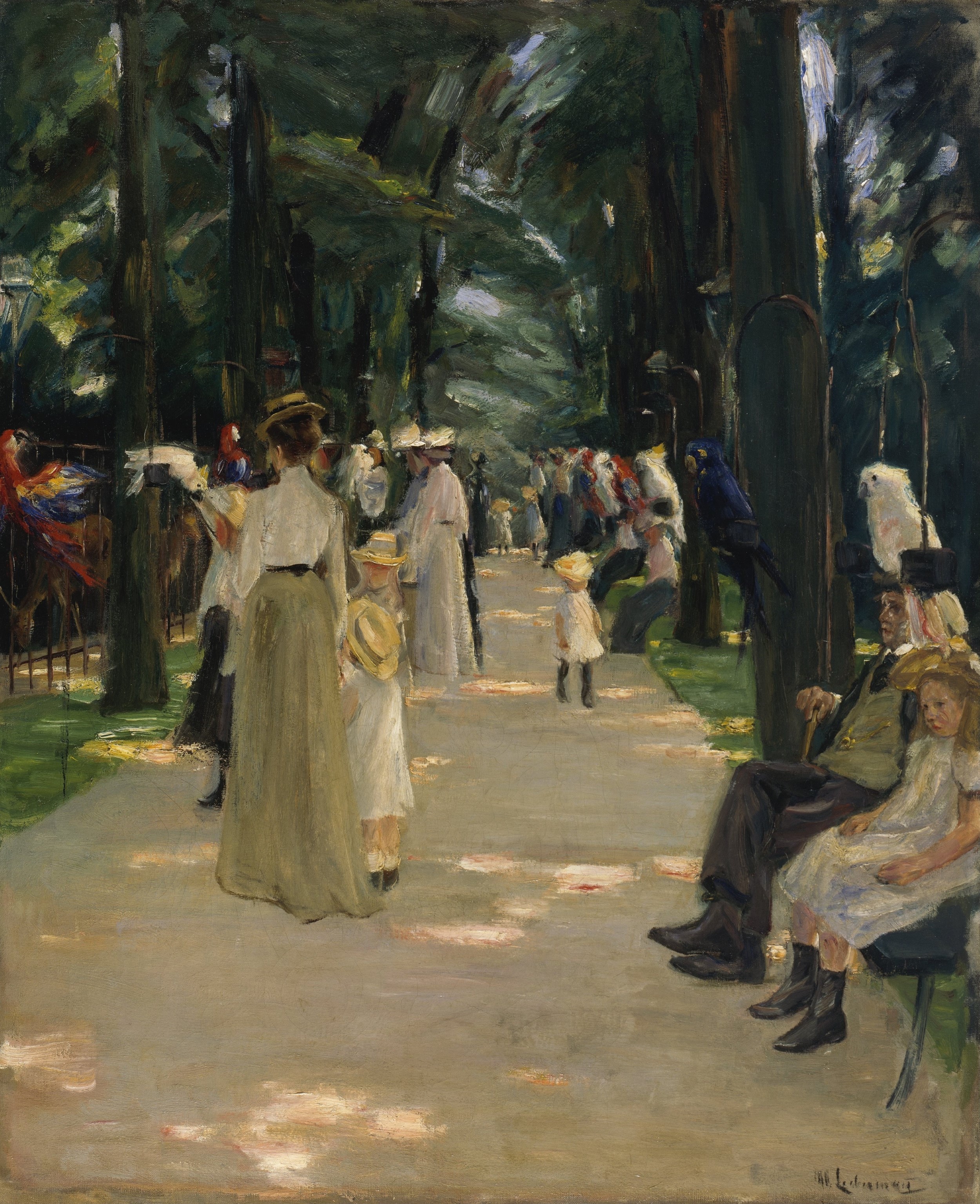Bremen’s Liebermann collection is among the best in Germany, including, for example, the Papageienallee, considered to be a major work of German Impressionism. Through the leaves of the promenade, white islands of light shimmer through to the bright path, where elegant people in summer clothing are out for a stroll past the magnificently colored, exotic birds. Max Liebermann was interested in movement and light, but unlike the French Impressionists, he never dissolved the substance of the subjects depicted. As atmospherically light and spontaneously painted as the work appears, Liebermann prepared it just as painstakingly in studies in 1902, which he had made at the zoological gardens in Amsterdam, and of which two are in the Department of Prints and Drawings at the Kunsthalle Bremen. The balanced composition is based on the artist’s directing the figures into the distance on alternating sides of the pictorial axis formed by the path, whereas he arranged the parrots like a frieze along the main horizontal line of the picture. As the successful president of the Berlin Secession and the city’s leading artist, Liebermann found himself in a social position that prompted him to turn to the self-portrait from 1900 onwards. This self-portrait of 1916 shows him somewhere between reflection and uncertainty. In keeping with his serious and sober work ethic, he portrays himself here before a bare studio wall, behind the easel, so that the painting it bears is not presented as a motif, but instead only as a working material. His painterly gesture seems cautious and indecisive, his facial expression taut around the eyes. Even though Liebermann was not personally affected by the war, he lived in seclusion at Wannsee Lake during this time. Due to new trends in art, his position as an artist had become more difficult. Already in 1910, his confrontation with the Expressionists had triggered a crisis within the Berlin Secession, which led to him resigning as president in November 1911. In 1916, the year this Bremen painting was executed, he published his work Die Phantasie in der Malerei (Imagination in Painting), which had appeared as early as 1903, but this time was published in book form for the first time. Here, he attempted to establish binding quality standards for painting, rejecting any art that was not based on the notion of reality.
de

